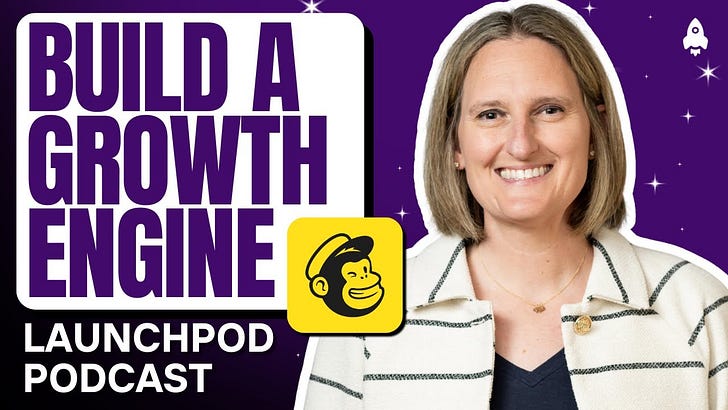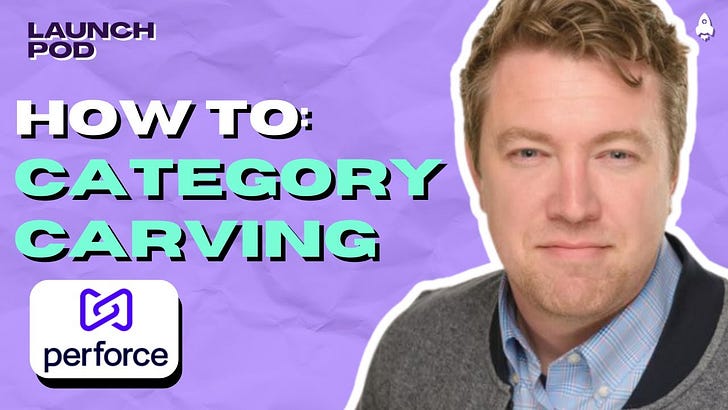Lauren Schuman scaled product-led growth at Mailchimp. In this episode of LaunchPod, she breaks down what worked, what failed, and where PLG falls flat.
Now VP of Product Growth at Bitly, Lauren joined us on LaunchPod this week to talk about:
• Building growth from scratch inside a company that had never done it before
• Turning failed launches into breakout wins
• Navigating org dynamics that can make or break even the best product ideas
This one’s packed with practical lessons!
Turning PLG into a systematic growth engine
When Lauren joined Mailchimp, PLG wasn’t a formal function, it was more of an instinct.
“Product Growth as a concept was new when I joined Mailchimp. We didn’t call it that. But that was effectively what I was doing: driving monetization outcomes through user behavior changes in product.”
Over time, though, she helped turn that instinct into a repeatable system.
It started as one team. But the goal was much bigger: to make product-led growth a company-wide capability.
That meant building the internal infrastructure including shared models, tooling, and templates, so teams across the org could run their own PLG plays.
Lauren and her team standardized onboarding flows and success metrics. They operationalized experiments tied to monetization and activation.
And most critically, they got other teams bought in.
“What we ended up doing was creating a growth capability that was leveraged by every team. We had a shared monetization experimentation model. We had onboarding models. We had templates. And it became something that we could offer to others, where we could say, 'Hey, this is the playbook.'”
The result wasn’t just more experiments. It was a culture that knew how to build and scale growth from within.
How a homepage experiment sparked a 183% spike in adoption
Lauren shared the story of a product launch at Mailchimp that underperformed…until her team tried a simple but powerful change.
"We looked at the homepage experience and we realized that in order to log into Mailchimp, you actually had to go through the homepage. But everybody was getting the same experience, which was ‘sign-up for free.’"
That messaging made no sense for existing customers.
So Lauren’s team merchandised the homepage like an ecommerce storefront, but for SaaS features. Instead of a one-size-fits-all CTA, they ran a test targeting existing customers with a featured announcement: "Hey, introducing landing pages" with a deep link into the product.
"As a result of that experiment we drove, like, a 183% increase in landing page usage with existing customers."
The takeaway? Feature discovery isn’t just about documentation or tooltips—it’s about getting the right experience in front of the right user, at the right time.
Rebuilding an icon: Mailchimp’s email editor
At Mailchimp, Lauren noticed engagement with their core email editor was starting to stall.
The team had tried to optimize the existing experience, but it was clear the editor, built over a decade ago and layered with technical debt, wasn’t cutting it.
"We had Frankensteined that thing for 10 years."
So Lauren took a bold step: rebuild it from scratch. But first, she made the case in a way no one could ignore.
"I had execs in a room watching people go through the old email editor. It was like nails on a chalkboard. They were all like, ‘this is bad, this is really bad.’ And I was like, ‘I know, I’ve been telling you.’"
That moment broke through the inertia.
The new editor wasn’t just cleaner, it unlocked a better product and more growth.
"It allowed us to create use-case-based flows and templates. It made onboarding more contextual and relevant."
By fixing the foundation, her team made it easier to personalize, experiment, and scale; fueling both customer success and future growth.
The PLG playbook doesn’t work everywhere
After building a high-performing PLG engine at Mailchimp, Lauren joined a new company to do it again.
But this time, the motion didn’t stick.
Why?
"It was a sales-led company that wanted PLG... but didn’t really understand what it would take to support it."
She quickly realized there was no shared agreement on what PLG actually meant—or what would need to change.
“The hardest part was getting alignment on definitions. What is a product-qualified lead? What are the stages of the journey? Nobody agreed.”
She built detailed docs, onboarding flows, and tracking plans; but without support from go-to-market partners, none of it moved the needle.
"We didn’t have alignment from marketing, sales, or customer success. It was all uphill."
Eventually, the effort fizzled out. But it wasn’t a waste.
Lauren left with a hard-earned lesson for anyone trying to bring PLG into a non-PLG culture:
"You need buy-in not just from leadership, but across the company. PLG isn’t a feature or a funnel. It’s a company-wide motion. And if everyone isn’t aligned, it won’t work."










